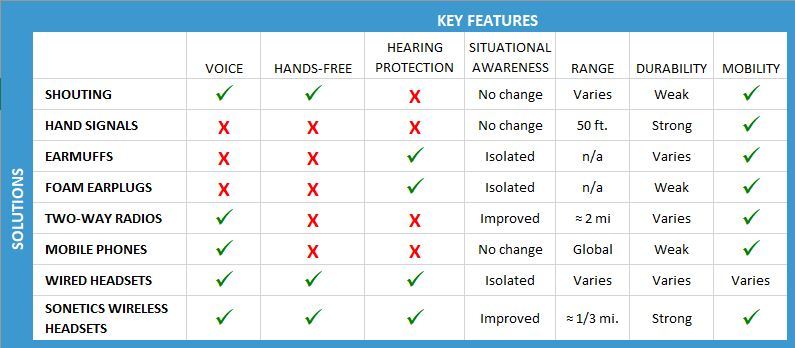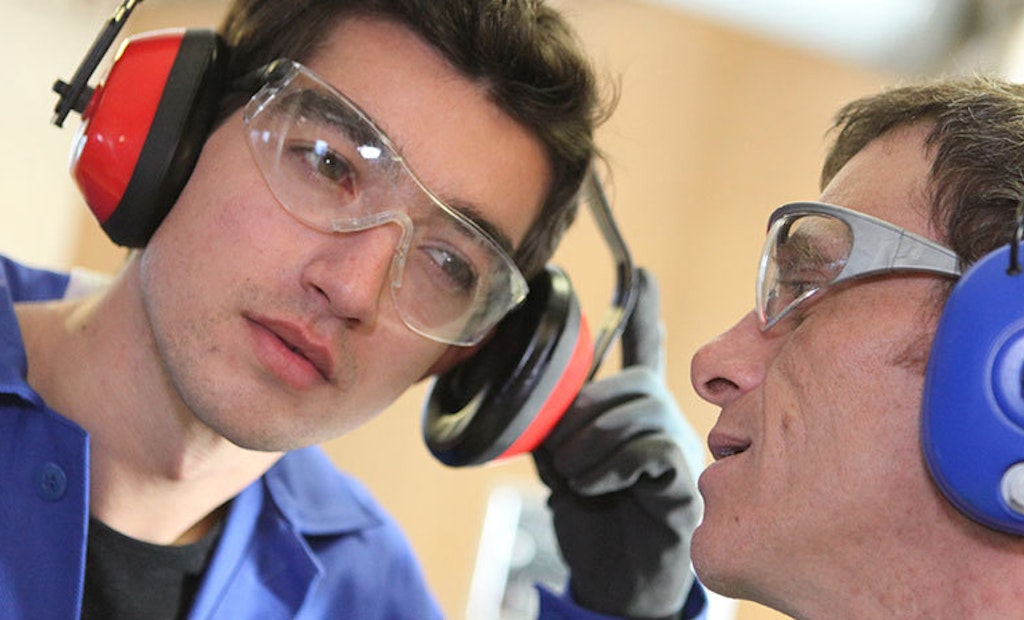A communication failure on a job site, factory floor or other high-traffic work zone can have serious, even life-threatening consequences. Hearing damage, on the other hand, usually accumulates over the long term and while it can be painful and debilitating, it normally isn’t considered catastrophic. Because it often takes time to notice the effects of hearing damage, that delay is why many workers prioritize communication over hearing protection — especially if they don’t feel safe wearing earplugs or earmuffs. This is the communication/hearing protection dilemma.
Many employers in construction, manufacturing, public works and other heavy industries continue to try to solve the communication/hearing protection dilemma with partial solutions. To avoid communication failure, employers will sometimes double down on partial solutions such as cellphones and two-way radios. Unfortunately, neither is equipped for hearing protection so your hearing will always lose.
Sonetics Corp’s latest white paper, “Integrated Communication and Hearing Protection in High-Noise Environments,” examines some of these partial solutions and why they’re dangerous.

Do partial solutions measure up? Compared with Sonetics Wireless Headsets, partial solutions have significant drawbacks that can affect both team communication and hearing protection.
Shouting
Shouting to communicate with coworkers provides a temporary workaround. First and foremost, workers need to be within “shouting distance.” Then they’ve got to be loud enough to be heard over background noise, and have the attention of all crew members each time they need to communicate. Unfortunately, shouting raises stress levels (cumulatively when repeated throughout a shift) and shouted messages can be missed completely or misunderstood easily in challenging environments.
Hand signals
Hand signals can be an alternative or a supplement to shouting. To be seen, hand signals require a clear line of sight, which can be challenging in busy work zones. Also, workers need to be close enough to see and understand them. Because of this, hand signals are often misinterpreted and misunderstood.
Earplugs and earmuffs
Low-tech hearing protection such as foam earplugs or earmuffs reduce noise but introduce a communication barrier by making it difficult or impossible to hear and understand speech, alarms and warnings. The isolation some workers feel when required to wear them means they are often used incorrectly or not at all.
Two-way radios and cellphones
Two-way radios and cellphones solve the communication issue but compromise hearing protection when — in order to use them — workers must either shut down machinery, leave the area, or remove their hearing protection and expose their ears to high noise.
Wired headsets
Wired headset communication systems provide hearing protection and communication functionality. However, they also introduce a lack of mobility and the risk of tangling and snagging cords in machinery or on protrusions. Wires and connectors are prone to failure, adding unnecessary maintenance and downtime.
Download the white paper “Integrated Communication and Hearing Protection in High-Noise Environments” to learn more about the safety, productivity and health benefits of a complete team communication. Learn how to avoid communication failure across multiple industries.






